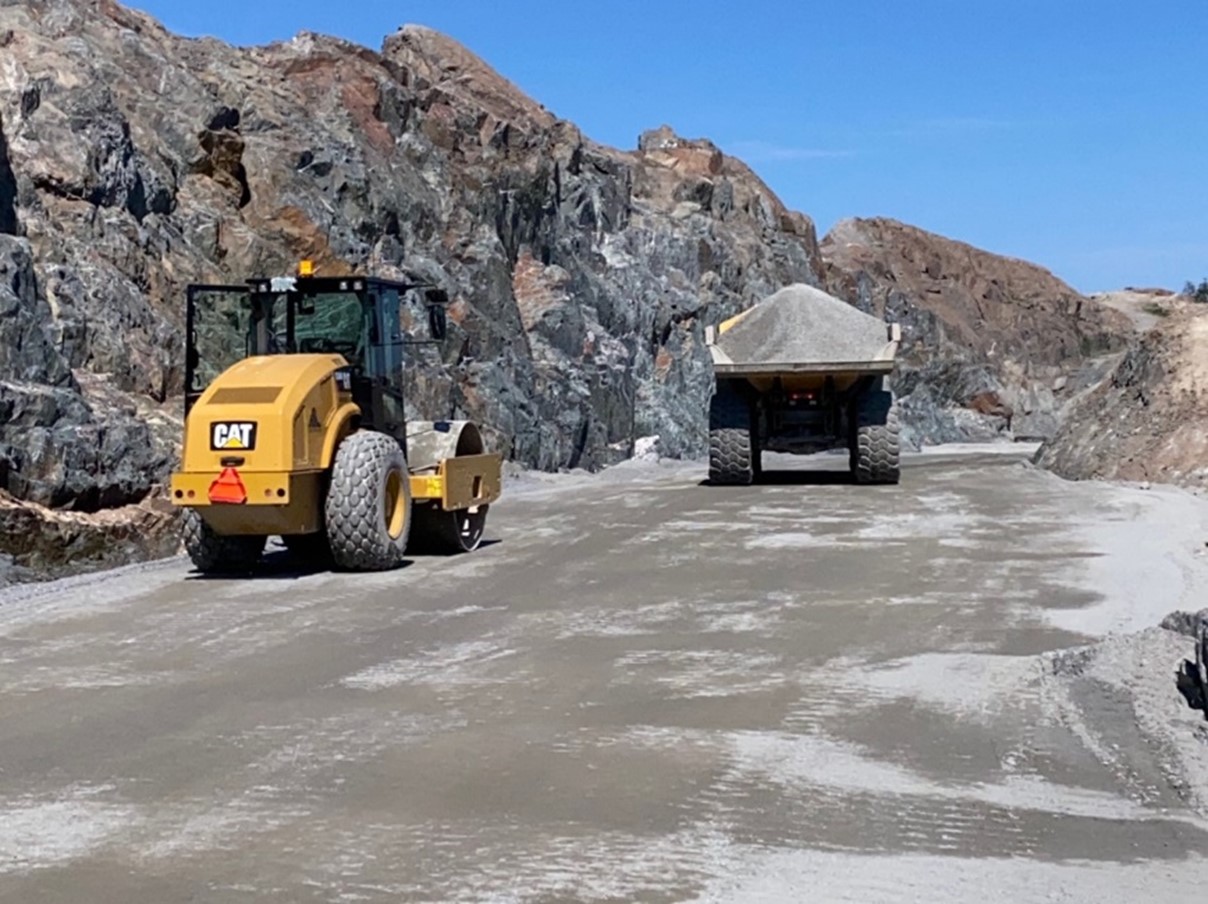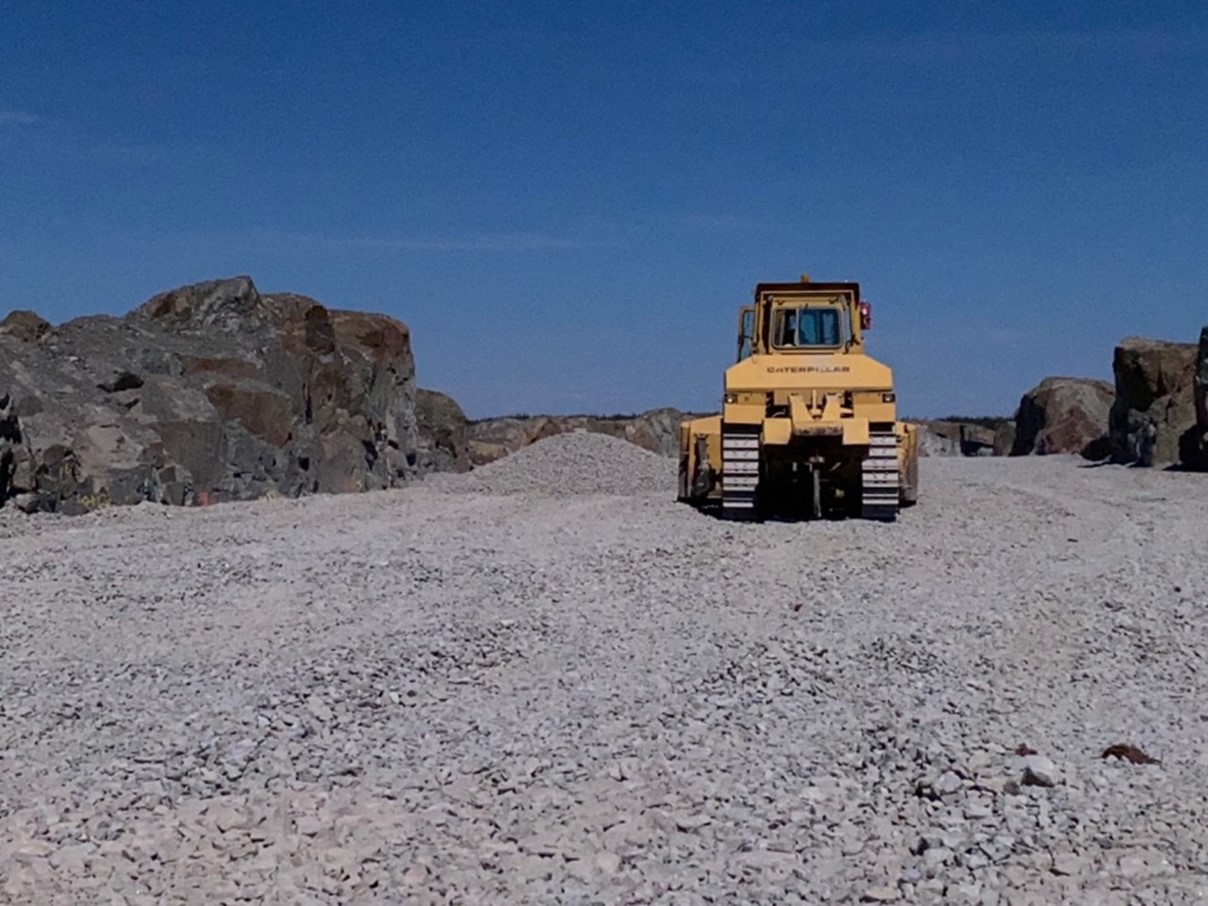What's happening at Giant Mine? May and June 2022
On this page
Project schedule update
The Project Implementation Plan was finalized in April 2022, and the Giant Mine Remediation Project now has an updated schedule for the roll-out of the remediation work and new estimated timeline for the Project’s completion.
A high level overview of this project schedule was included in the Giant Mine Remediation Project’s 2021 Water Licence Annual Report, submitted to the Mackenzie Valley Land and Water Board on May 2, 2022. It is available on their public registry. The Project also presented this information to rights holders and stakeholders in the Giant Mine Working Group’s May and July meetings.
The remediation phase of the Project was updated to now continue until 2038. This lengthening of the schedule from approximately 10 years to 15 years was decided after thorough evaluation of all potential options and scenarios. Through this evaluation, it was decided that the new schedule provides the best option for sequencing the work packages and more importantly, maximizing local socio-economic benefits.

Site update
Effluent Treatment Plant start-up
In recent years the project has treated approximately 700,000m3 of water each season. Water treatment is performed at the Giant Mine site to prevent the underground from flooding. This is done by pumping arsenic contaminated water out of the underground year-round and storing it in the Northwest Tailings Pond.
Every summer the stored water is treated at the Effluent Treatment Plant and released to Baker Creek. The water is treated to meet the effluent quality criteria outlined in the Type A Water Licence issued by the Mackenzie Valley Land and Water Board and the Metal and Diamond Mining Effluent Regulations prior to release.
In 2022, discharge of effluent began on June 3, 2022. Generally the site begins discharge around the beginning of July, however the site experienced greater inflows of water to the underground over the winter and the surface storage area in the Northwest Tailings Pond approached its storage capacity. To manage the additional water on site, the decision was made to start-up the Effluent Treatment Plant operations earlier.
The Effluent Treatment Plant is aging and will be replaced by the new Water Treatment Plant as one of the first items in the Project Implementation Plan schedule. Construction of the new Water Treatment Plant is scheduled to begin in Spring 2023.
The Water Treatment Plant is expected to be operational in 2025, and once it is, the contaminated water will be treated and released year-round to Yellowknife Bay. The water will be treated to drinking water standards for arsenic and all other parameters will be treated to the effluent quality criteria as per the Type A Water Licence.
Underground stabilization
The Project team is preparing to begin work that will continue to stabilize the underground. The team will use backfill materials to stabilize the underground to reduce the risk of surface subsidence (sinking) due to underground voids. This is similar to work the Project undertook starting in 2013 to keep the site stable until remediation work started in 2021.
In preparation for this work, a contractor drilled holes from the surface into the underground voids. Engineered barricades, or fill fences, were constructed underground, and remote monitoring cameras installed. In June, after implementing a paste quality control program, workers began pumping the paste fill mixture into select underground voids in order to fill them.
This mixture is made of:
- water
- tailings
- cement
- chemical additives
The Project expects that this phase of the underground stabilization will take place from June until November 2022.
Non-hazardous waste landfill
In 2021, the Project team commissioned the construction of the non-hazardous waste landfill. While the bulk of the work was completed in 2021, some finalization work was required in spring 2022, and took place in June.
As a result, the non-hazardous waste landfill will become operational and we will be able to safely dispose of legacy non-hazardous waste generated during the remediation work. The current Project schedule expects the non-hazardous waste landfill to become operational in July, accepting the delivery of waste from the townsite deconstruction activities in mid-to-late July.
Townsite deconstruction
Work to begin the deconstruction of the former townsite area on site is planned to begin in July 2022.
This work includes:
- removing asbestos and any hazardous materials (lead paint, fluorescent light bulbs) in accordance with appropriate health and safety protocols
- disposing of waste properly, according to our Waste Management and Monitoring Plan
- deconstructing the buildings
- placing the remaining non-hazardous waste and debris in the site’s non-hazardous waste landfill
AR1 freeze pad construction
As reported in the October 2021 to February 2022 newsletter, construction of the AR1 freeze pad (1 of the 4 freeze pads to be constructed) began last year with blasting of the rock outcrop to create a level surface.
The AR1 freeze pad is located next to Baker Creek and the work was undertaken in consultation with Fisheries and Oceans Canada to ensure fish and fish habitat were not harmed. Work continues into this summer to bring in granular material, clear remaining blasted rock and complete the pad surface. Once completed, this pad will provide a level surface where thermosyphons can be installed as part of the overall freeze program. Thermosyphon installation in this area is scheduled to begin in 2026.


Engagement update
Townsite and marina area concepts
Over the next few months, the Project team is engaging rights holders and stakeholders, including the Giant Mine Working Group, the Yellowknife Historical Society, and the Great Slave Sailing Club, with respect to how the townsite and marina area might look in future. The engagement will allow participants to review the conceptual drawings of the design and provide feedback into what the townsite and marina area will look like during each phase of the remediation as well as after remediation is complete. The Project team aims to:
- identify potential conflicts between how various parties use the townsite and marina area
- provide information about how access will be constrained or altered by future changes
- get feedback on the size, shape, and locations of areas that will be used for parking and storage
- inform participants of how the area will look and function over the next 10 to 20 years
The Project has committed to ensuring access will remain available to both the Yellowknife Historical Society’s museum building and the lake at all times during remediation activities. The Project will maintain lake access via the existing public boat launch while work is being completed in the Great Slave Sailing Club launch area. The Project team will then enhance the Sailing Club’s dock area so it can accommodate a public boat launch and dock traffic and remain open during the time the public boat launch area is closed for soil and sediment remediation. Major work in the townsite and marina area is scheduled to begin summer 2028.
Giant Mine Oversight Board’s Annual Public Meeting
On May 16, the Giant Mine Oversight Board released it’s Annual Report for 2021. They presented a summary of this report, as well as the results of their online survey to-date, to the public. The Project’s Deputy Director, Natalie Plato, and Engagement Manager, Jessica Mace, attended so they could address questions about the Project that members of the community had. The Project team thanks the Giant Mine Oversight Board for their ongoing work and collaboration with the team to ensure the site remains safe for Northerners and the environment throughout the remediation process.
Procurement update
Industry Day November 2022
Preliminary planning for an in-person Industry Day, tentatively in November 2022, is underway with Parsons Inc. Industry Day is an event held by the Project’s Main Construction Manager that is designed to inform the local area contracting community of potential remediation activities for the Giant Mine Remediation Project. The most recent Industry Days event took place online over January 18, 19, and 20, 2022.
For more information on Industry Day, and for information on upcoming procurement and contracting opportunities through Parsons Inc., please visit giantminerp.ca.
How to learn more about the Project
The Project team encourages members of the public to learn more about the remediation through a number of channels. You are invited to subscribe to our distribution list so the team can let you know when the online newsletter is live and send you important notifications about the work or engagement. For other ways to engage with the Project team, see the contact us section below.
Contact us
Phone: 867-669-2426
Email: giantmine@rcaanc-cirnac.gc.ca
Twitter: @GiantMine